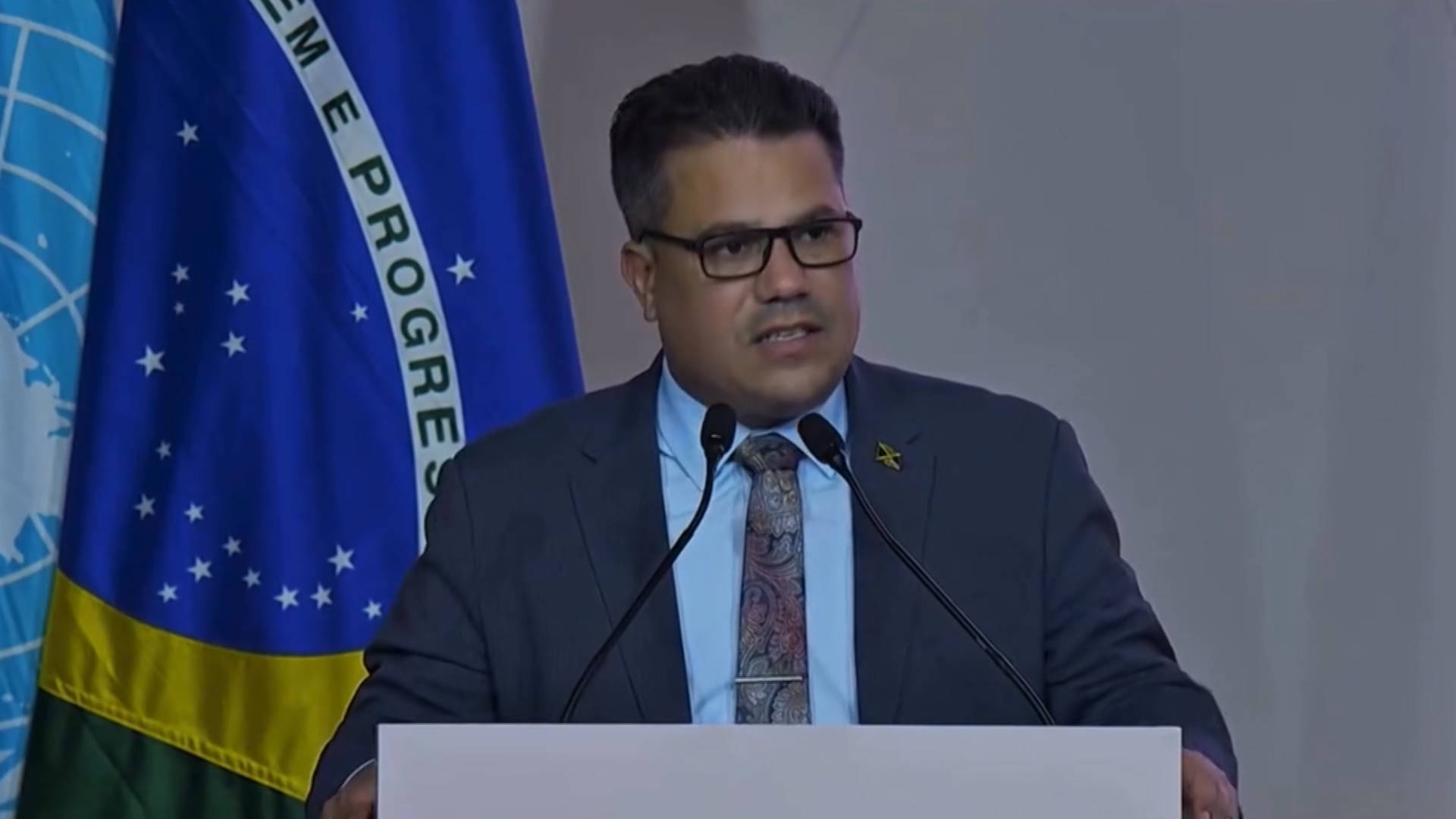Leaders, community members discuss Beloit’s Climate Action Plan – WIFR

City of Beloit Initiates Climate Action Plan to Advance Sustainable Development Goals
The City of Beloit, Wisconsin, has commenced the development of a comprehensive Climate Action Plan, signaling a significant commitment to environmental stewardship and long-term sustainability. This initiative directly supports the United Nations Sustainable Development Goals (SDGs), particularly SDG 13 (Climate Action) and SDG 11 (Sustainable Cities and Communities). The city is collaborating with the sustainability consulting firm PaleBLUEdot LLC, a partnership that exemplifies SDG 17 (Partnerships for the Goals), to achieve its objective of net-zero greenhouse gas (GHG) emissions by 2040.
Strategic Framework: Mitigation and Adaptation
The plan is structured around a dual-strategy approach to address the complexities of climate change, aligning with global best practices and SDG targets.
- Mitigation: Focuses on reducing the primary drivers of climate change. This involves actionable steps to cut GHG emissions, directly contributing to SDG 13 (Climate Action) and promoting the transition to clean energy sources as outlined in SDG 7 (Affordable and Clean Energy).
- Adaptation: Aims to reduce the community’s vulnerability to the unavoidable impacts of climate change. This strategy enhances urban resilience and public welfare, supporting the objectives of SDG 11 (Sustainable Cities and Communities) and SDG 3 (Good Health and Well-being).
Multi-Sector Approach and Projected Outcomes
The Climate Action Plan adopts a wide-ranging, multi-sector approach to ensure comprehensive integration of sustainability principles across the community. The preliminary goals, if implemented, are projected to reduce citywide GHG emissions by 39% below 2023 levels by 2033.
Key Sectors of Focus:
- Buildings and Energy: Targeting energy efficiency and renewable energy adoption to support SDG 7.
- Transportation: Promoting sustainable transit options to create an inclusive and safe transportation system in line with SDG 11.
- Solid Waste: Implementing strategies for waste reduction and management, contributing to SDG 12 (Responsible Consumption and Production).
- Green Space: Enhancing natural areas to improve biodiversity, public health, and community resilience.
- Health and Safety: Addressing climate-related health risks to safeguard community well-being, a core component of SDG 3.
Process and Community Engagement
The development of the Climate Action Plan is a year-long, collaborative process designed to be inclusive and transparent, reflecting the participatory principles of SDG 11.
- Consultation: The City of Beloit engaged PaleBLUEdot LLC to provide expert guidance and facilitate the planning process.
- Public Feedback: Community members are invited to review preliminary goals and provide input through public meetings and an online survey, ensuring the final plan reflects local priorities.
- Draft Development: A draft plan will be formulated based on expert analysis and community feedback throughout the remainder of the year.
- Council Review: The finalized draft plan will be presented to the Beloit City Council for consideration and formal adoption.
SDGs, Targets, and Indicators Analysis
1. Which SDGs are addressed or connected to the issues highlighted in the article?
- SDG 7: Affordable and Clean Energy: The article explicitly mentions Beloit’s goal to build “a future built on clean and sustainable energy” and references the involvement of a consultant specializing in “renewable energy planning.” This directly connects to the goal of ensuring access to clean energy.
- SDG 11: Sustainable Cities and Communities: The entire initiative is city-focused, with the “City of Beloit” creating a “Climate Action Plan.” The plan addresses urban sectors like “buildings and energy, transportation, solid waste, green space,” and emphasizes community participation through public meetings and surveys, which aligns with making cities inclusive, safe, resilient, and sustainable.
- SDG 13: Climate Action: This is the central theme of the article. The development of a “Climate Action Plan” to fight “climate change” is the main topic. The plan aims to address both “mitigation” (reducing climate change) and “adaptation” (reducing vulnerability), which are core components of SDG 13.
- SDG 3: Good Health and Well-being: The article notes that the plan’s sectors include “health and safety considerations.” Actions to reduce greenhouse gas emissions, such as improving transportation and energy systems, also reduce air pollution, which has direct positive impacts on public health.
2. What specific targets under those SDGs can be identified based on the article’s content?
-
SDG 7: Affordable and Clean Energy
- Target 7.2: By 2030, increase substantially the share of renewable energy in the global energy mix. The article’s focus on “clean and sustainable energy” and “renewable energy planning” directly supports this target by aiming to shift the city’s energy sources.
-
SDG 11: Sustainable Cities and Communities
- Target 11.3: By 2030, enhance inclusive and sustainable urbanization and capacity for participatory, integrated and sustainable human settlement planning and management. The article describes a participatory process where the “City of Beloit welcomed community members to view and provide feedback” and offered surveys and additional meetings for public input on the plan.
- Target 11.6: By 2030, reduce the adverse per capita environmental impact of cities, including by paying special attention to air quality and municipal and other waste management. The plan’s goal to achieve “net-zero greenhouse gas emissions” and its focus on sectors like “solid waste” directly addresses this target.
- Target 11.b: By 2020, substantially increase the number of cities and human settlements adopting and implementing integrated policies and plans towards inclusion, resource efficiency, mitigation and adaptation to climate change. Beloit’s “Climate Action Plan” is a direct example of such an integrated plan, as it explicitly addresses both “mitigation and adaptation.”
-
SDG 13: Climate Action
- Target 13.2: Integrate climate change measures into national policies, strategies and planning. The article demonstrates this target being implemented at the local level, as the City of Beloit is creating a formal “Climate Action Plan” to guide “city actions that the city can do on its properties, fleets, etc.”
- Target 13.3: Improve education, awareness-raising and human and institutional capacity on climate change mitigation, adaptation, impact reduction and early warning. The public meetings where “preliminary goals were posted for residents to view and add suggestions” serve as a mechanism for education and awareness-raising within the community.
3. Are there any indicators mentioned or implied in the article that can be used to measure progress towards the identified targets?
- Existence of an integrated climate action strategy: The primary indicator is the development and adoption of the “Climate Action Plan” itself, which is mentioned throughout the article. This serves as a direct indicator for Target 11.b and 13.2.
- Greenhouse Gas (GHG) Emissions Reduction: The article provides a specific, measurable indicator. It states a preliminary goal to “reduce citywide GHG emissions by 39% below 2023 levels by 2033” and an ultimate goal of achieving “net-zero greenhouse gas emissions by 2040.” This is a key indicator for Target 11.6 and 13.2.
- Participatory planning process: The article implies indicators of public engagement, such as the number of public meetings held (“Wednesday evening, the City of Beloit welcomed community members…another one will take place next week”) and the availability of public feedback mechanisms like surveys (“residents can also go to the link…and also take a survey to make suggestions”). This measures progress towards Target 11.3.
- Inclusion of specific sectors in planning: The article mentions that the plan will address a “wide range of sectors,” including “buildings and energy, transportation, solid waste, green space, health and safety considerations.” The inclusion and monitoring of these sectors serve as an indicator of a comprehensive approach to Target 11.6.
Summary Table
4. Create a table with three columns titled ‘SDGs, Targets and Indicators’ to present the findings from analyzing the article.
| SDGs | Targets | Indicators |
|---|---|---|
| SDG 7: Affordable and Clean Energy | 7.2: Increase substantially the share of renewable energy. | Implied: Increased use of clean and renewable energy sources in the city’s energy mix as part of the “renewable energy planning.” |
| SDG 11: Sustainable Cities and Communities | 11.3: Enhance inclusive and sustainable urbanization and participatory planning. | The implementation of a participatory planning process, evidenced by public meetings and surveys for community feedback on the Climate Action Plan. |
| 11.6: Reduce the adverse per capita environmental impact of cities. | Reduction in citywide GHG emissions; management of solid waste sector. | |
| 11.b: Increase the number of cities adopting integrated policies and plans for mitigation and adaptation. | The development and adoption of the “Climate Action Plan” which explicitly addresses both mitigation and adaptation. | |
| SDG 13: Climate Action | 13.2: Integrate climate change measures into policies, strategies and planning. | Specific GHG reduction goals: “reduce citywide GHG emissions by 39% below 2023 levels by 2033” and achieve “net-zero greenhouse gas emissions by 2040.” |
| 13.3: Improve education, awareness-raising and human and institutional capacity. | Holding public meetings and providing draft plans and surveys to residents to “share ideas and hopes for a more sustainable Beloit.” |
Source: wifr.com

What is Your Reaction?
 Like
0
Like
0
 Dislike
0
Dislike
0
 Love
0
Love
0
 Funny
0
Funny
0
 Angry
0
Angry
0
 Sad
0
Sad
0
 Wow
0
Wow
0














































































